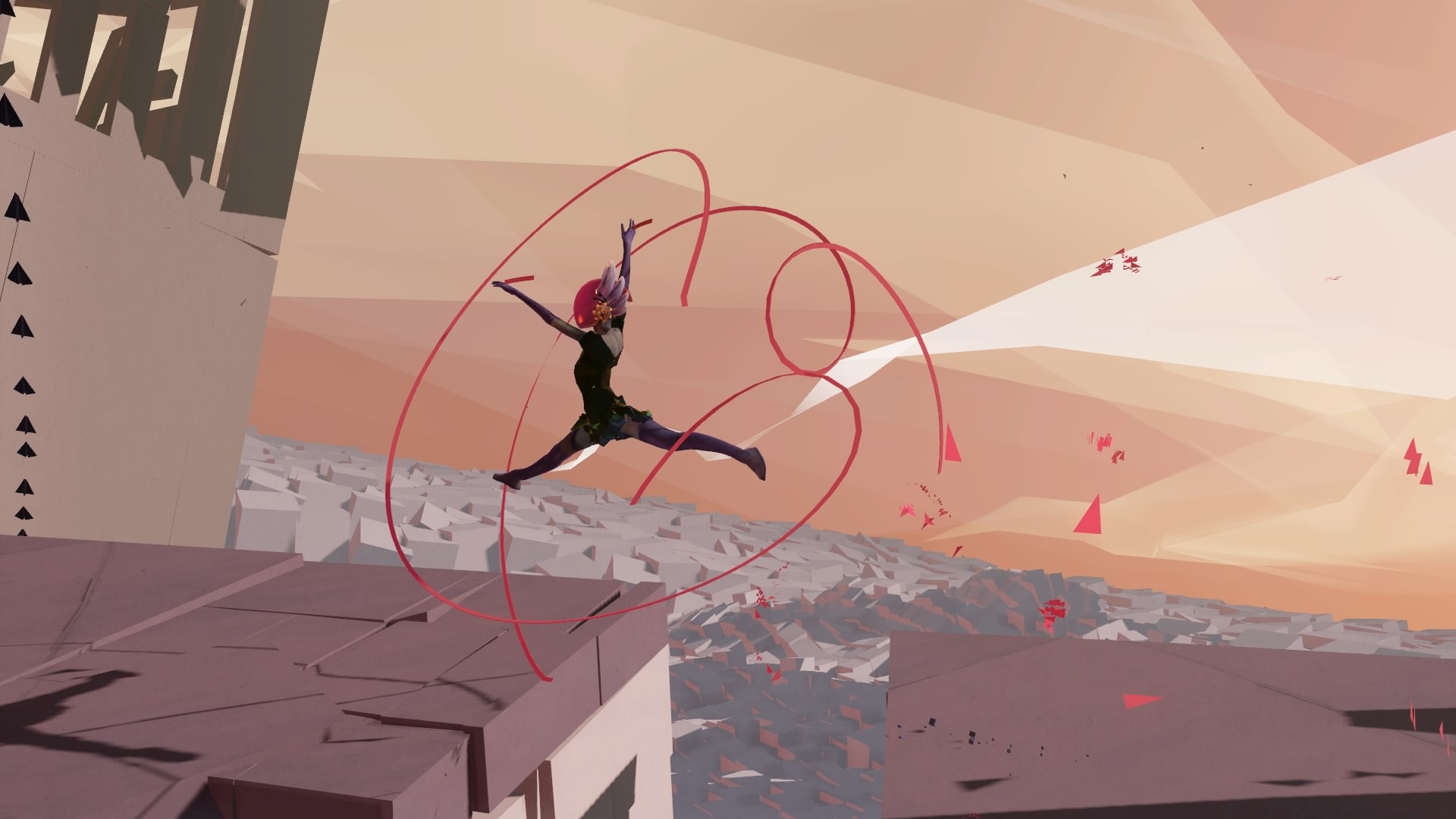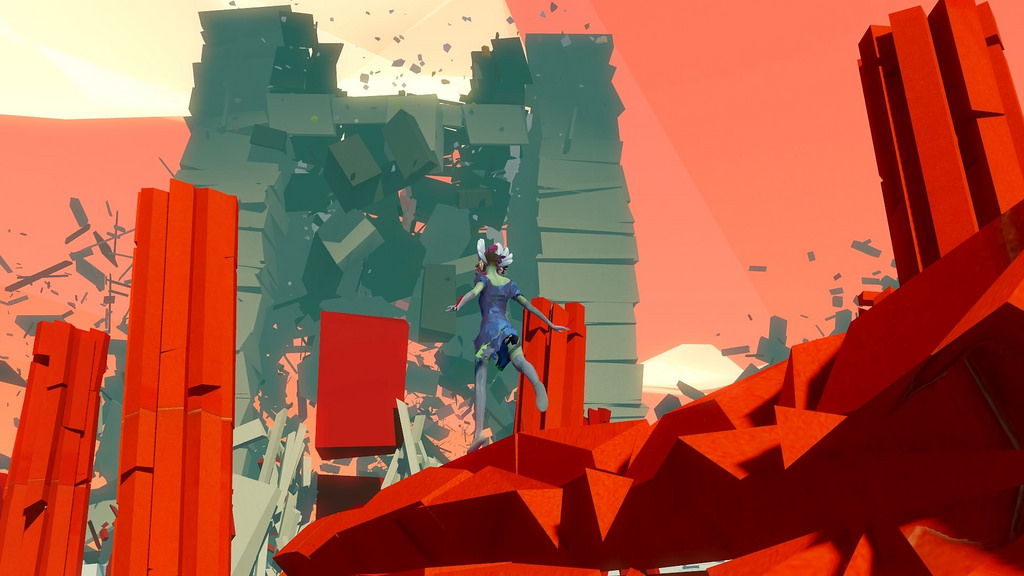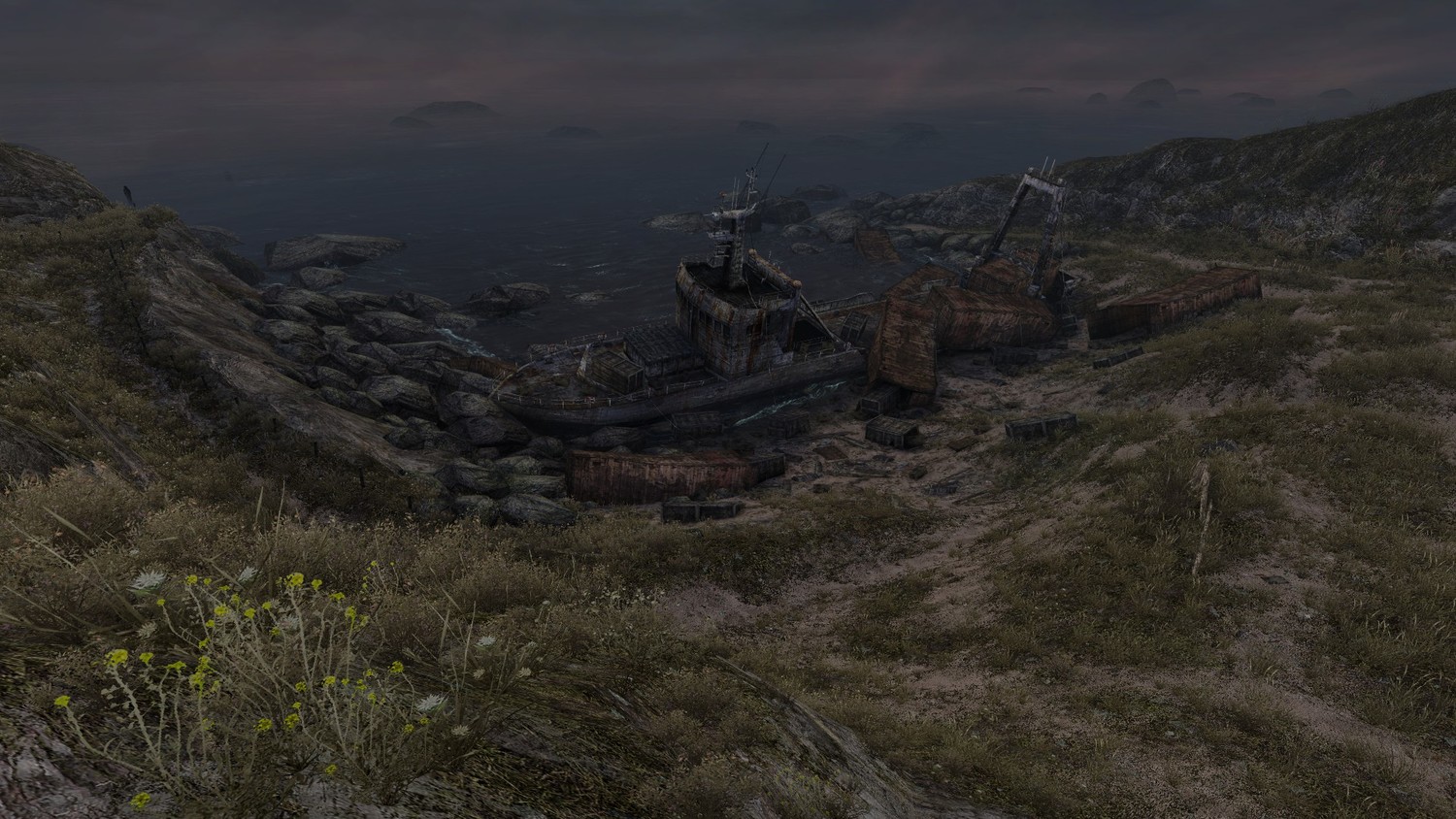
Review: Bound
Posted by Curtis H on August 16th, 2016 | 0 Comments | Tags: Bound
I truly can’t think of a game that has left me in such a trance-like state, not in the way that Bound did. The game’s lead, a young princess ballerina, moves with grace and dances effortlessly throughout her kingdom of colored shards and improbable geometry. The animation on the princess alone is just astounding, and this is coupled with a world that’s in constant motion around her. At times Bound feels like an incredibly elaborate ballet that I’m fortunate enough to take part in.
Bound’s story is one that should be seen with as few details known as possible. This isn’t just for fear of spoilers though, the entire basis of Bound’s storytelling is founded on the idea that each player can freely experience each chapter of the story in any order and ideally perceive things differently because of that. It’s the same story for everyone, but in switching the order Bound is able to alter how you might react to certain events. Like Journey and Abzu before it, Bound is abstract in its storytelling, but in this case, it’s a story that’s likely to hit far closer to home. The other half of this game is one that’s far more straightforward than you might expect. In general, I think Bound delivers with its emotional narrative (one moment towards the end in particular really got to me) and it’s likely one that’ll cause quite a bit of discussion once people get to play it for themselves.

Each chapter takes the princess deeper into her kingdom as she seeks to save it from a devastating monster. The levels are designed in such a way to encourage players to keep the princess dancing as you move forward through platforming sections and past dangerous vines and bat-like creatures. It’s so easy to just forget the world around you and watch in awe at the way the princess moves and how her kingdom moves for her. Make no mistake, this isn’t going to captivate people because of its platforming controls, this is about getting lost in a fantastical world with a character that can move through it in the most graceful of ways. Shimmying across ledges, climbing ribbons, leaping across large gaps; there’s a fluidity to every piece of animation that’s just really impressive.
Bound’s score, composed by Oleg “Heinali” Shpudeiko, works wonders in bringing out the kind of emotional journey the developers were hoping for. It also helps that so much of this game is about dancing, which, I’d imagine, was choreographed to fit perfectly with each song.
Completing Bound will unlock Speed Run mode and the ability to play through the game using the many filters available in its Photo Mode. Speed Run mode displays a detailed timer on the top left of the screen as it keeps track of your overall time, time per level, and amount of shards collected. What’s interesting is the way speed running ties into Bound’s overall design from the start. Choosing levels in different orders will ultimately change their appearance and sometimes open up alternate routes. Trying different orders and discovering new shortcuts helps to give players a reason to work together to potentially find the fastest routes possible. I appreciate the effort to give a reason to return to Bound, but I’m not confident that the platforming is actually interesting enough to keep me wanting to come back.
The story Bound presents is simple, it’s easy to relate to, and it’s one that’s not afraid to touch on some brutal realities. Yet, at the same time the raw emotion exhibited through the princess and her dance is enough to shine a little light in situations that can almost feel helpless.
A copy of this game was provided by the publisher for review purposes. For more info on our review policy click here.
General Info
- Developer: Plastic
- Publisher: Sony Santa Monica
- Platforms: PS4 (Reviewed)
- Release Date: August 2016
- Price: $19.99
- Genre: Platforming
Score:
What I Like:
- Fantastic animation and dancing choreography
- Great visual design. Love the world morphing alongside her dancing
- Soundtrack
- Speed Run mode is a cool addition
- Extensive options in photo mode
- Story, freedom to view it in any order, and the way stages are impacted by this
What I Dislike:
- Platforming can be a little messy




